I think we’re not alone in believing that some of the very best that the modern numismatic world has to offer are in the field of architectural coins. Ever since Coin Invest Trust kicked off the genre with its award-winning Tiffany Art coin in 2004, there have been multiple new series from various mints entering the fray and fighting for collectors money. CIT expanded their range a acouple of years ago to include a very limited mintage one-kilo version of its Tiffany series featuring all new designs. As before, it hasn’t taken long for others to join in, although the expertise and cost of these will obviously limit the broadening of choice somewhat.
Stepping up last May was Spanish coin producer, Moneda Nueva, designers of the Masterpieces in Stone and the Atlas of Wildlife coins. Their debut effort was a really super piece of work, issued for Fiji and depicting one of the worlds most beautiful buildings, the Taj Mahal. With an inset mineral window, antique-finish, and a high-relief strike, it was a super-size version of the genre signature format and we were impressed when we saw it. Back at this years World Money Fair in Berlin, we were very fortunate to see a prototype of this new release and bang on time the coin is now being launched for sale.
If anything, the second coin in this series trumps the first for design. Depicting the thoroughly enigmatic temple complex at Angkor Wat, all the elements that made the first coin so cool are fully in evidence here. The reverse face has a fine image of the temple itself, embedded in which is the agate window. The reverse has a brilliant composition of two faces from the complex, and the emblem of the issuer, this time around the Republic of Congo, is integrated without spoiling the harmony of the artwork too much. Inscriptions are minimal and well placed. Packaged in a high quality box, no less than you’d expect for a €3,000 plus coin, it’s available for pre-order now and highly recommended.
ANGKOR WAT
Angkor Wat, located in Siem Reap Province in Cambodia, amid forests and farmland to the north of the Great Lake (Tonlé Sap) and south of the Kulen Hills, is a quite phenomenal temple complex started in the 12th century by the ruler Suryavarman II (1113 – c. 1150), and is today a World Heritage Site. One of the most impressive builds in human history, the Angkor Wat Temple used more stone (6-10m sandstone blocks at an average of 1.5 tons each) than all of the Great Pyramids of Egypt combined, and covers an area greater than Paris does today. Almost every surface in the temple is adorned with carvings, a gallery wall alone being decorated with almost 1,000 square metres of bas-reliefs.
Angkor, the ruined city in Cambodia, once stood as the capital of the ancient civilisation of the Khmer Empire, which was ascendant from the 9th to the 15th centuries. It grew so large and powerful that during the years 1010-1220, fully 0.1% of the population of the whole world actually lived within its boundaries. The temples of the Angkor area number over one thousand, ranging in scale from nondescript piles of brick rubble scattered through rice fields to the magnificent Angkor Wat, said to be the world’s largest single religious monument.
In 2007, an international team of researchers using satellite photographs and other modern techniques concluded that Angkor had been the largest pre-industrial city in the world, with an elaborate infrastructure system connecting an urban sprawl of at least 1,000 square kilometres (390 sq mi) to the well-known temples at its core. It was the site of vast cities that served all the needs of the Khmer people. Aside from a few old bridges, however, all of the remaining monuments are religious edifices. In Angkorian times, all non-religious buildings, including the residence of the king himself, were constructed of perishable materials, such as wood, “because only the gods had a right to residences made of stone.”(Source: Wikipedia)
ADVERTISEMENTS
MINTS DESCRIPTION
A fascinating work of numismatic art is dedicated to Angkor Wat Cambodia’s most beloved and best preserved temple, as well as one of the largest religious monuments ever constructed. Originally built between roughly A.D. 1113 and 1150 as a Hindu temple dedicated to the god Vishnu, it was converted into a Buddhist temple in the 14th century, and statues of Buddha were added to its already rich artwork. Conveying the beauty and delicacy of Angkor Wat through a skillful blend of detail and ultrahigh relief, the coin takes you on a journey within the fascinating walls of the temple.
With the mintage of a mere 100 coins worldwide, the Angkor Wat coin is a 1 kilo silver .999 piece in ultrahigh relief notable for exquisite craftsmanship and detailed elaboration. The special thing about this coin is its refined look enhanced with a rich green malachite inset. Thorough and precise minting process has resulted in the highly detailed obverse and reverse images that reveal decorative patterns of the Angkor Wat walls. This silver coin will take your breath away at first sight – a true work of art!
SPECIFICATION
| DENOMINATION | COMPOSITION | WEIGHT | DIAMETER | FINISH | MINTAGE | BOX / COA |
|---|---|---|---|---|---|---|
| 10,000 FRANCS CFA | 0.999 SILVER | 1,000 g | 100.0 mm | ANTIQUE | 100 | YES / YES |


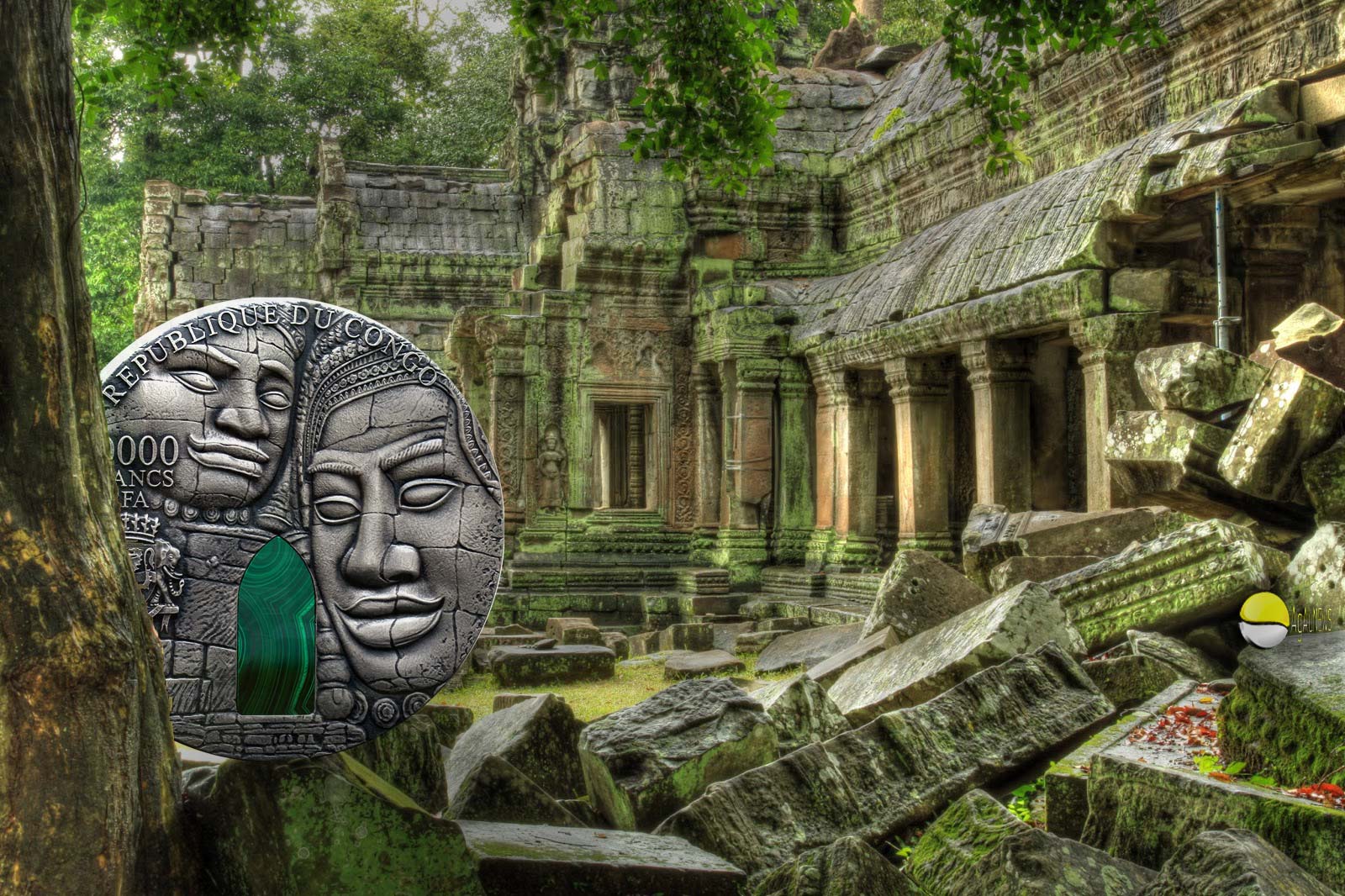
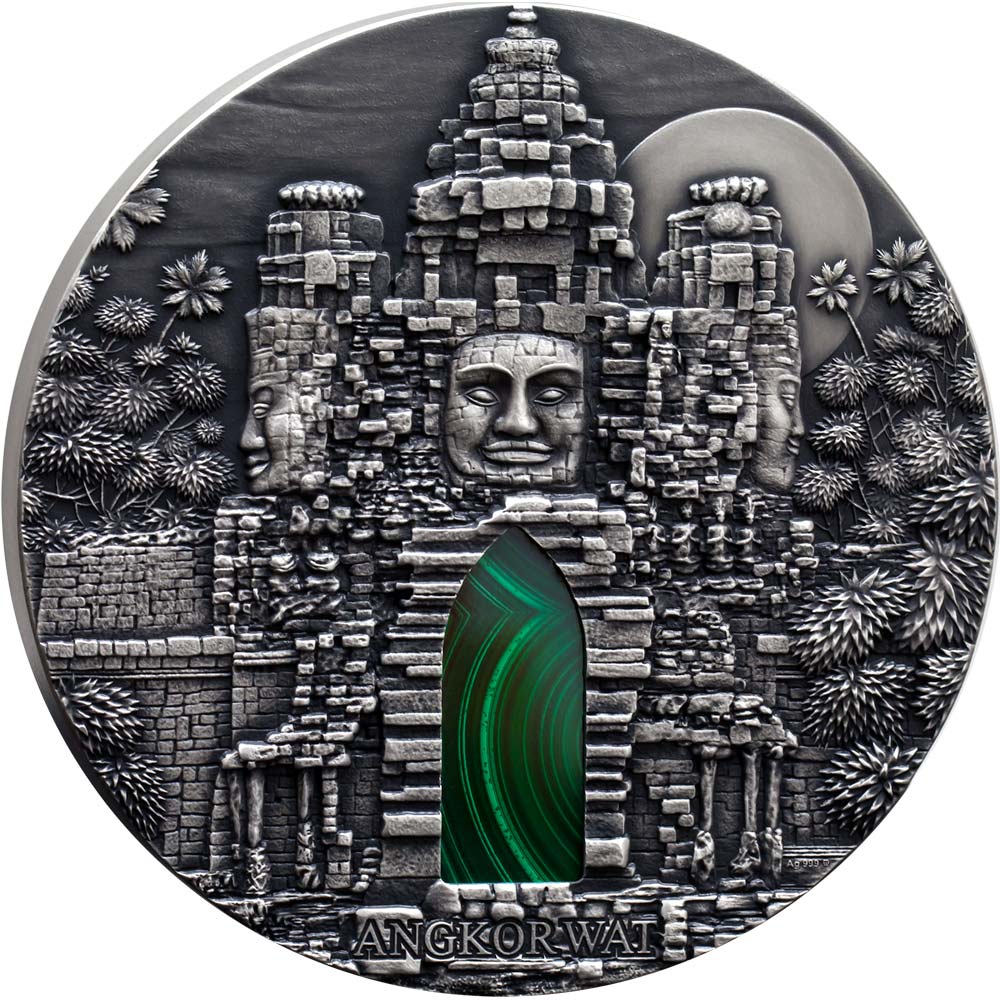
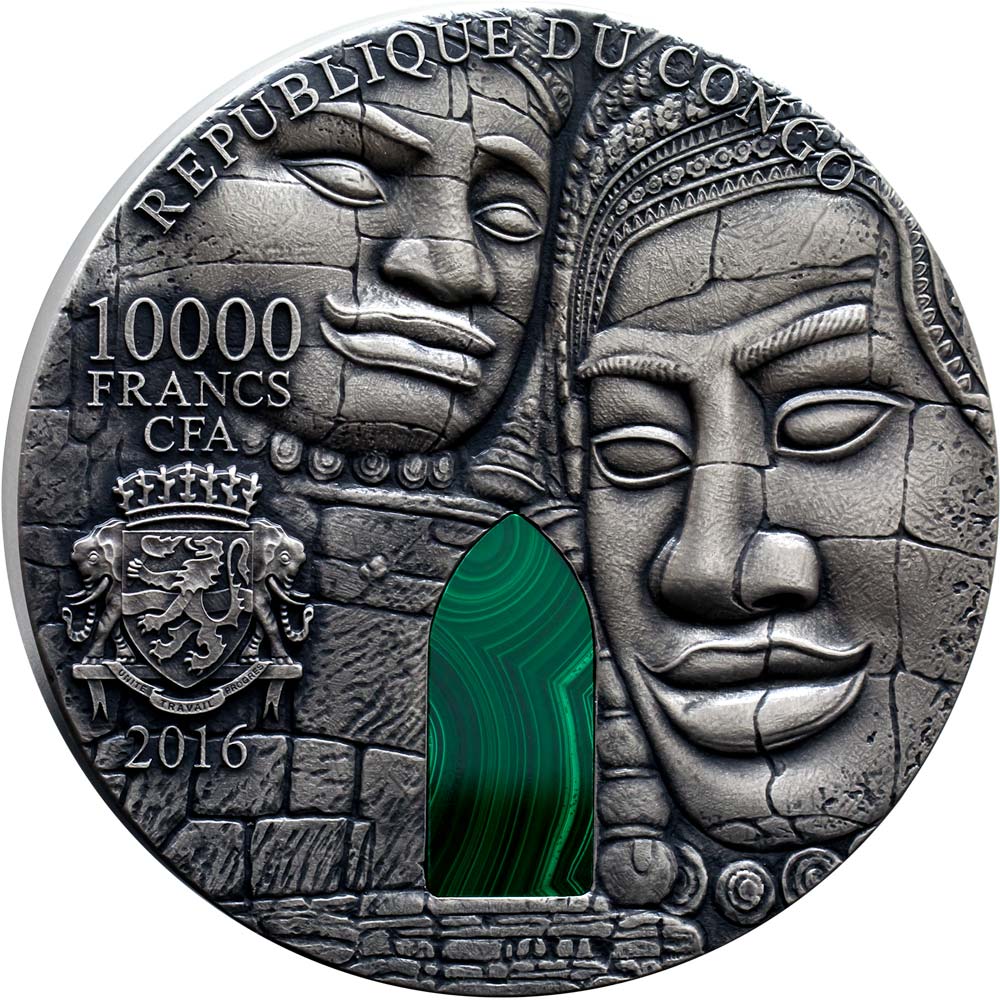

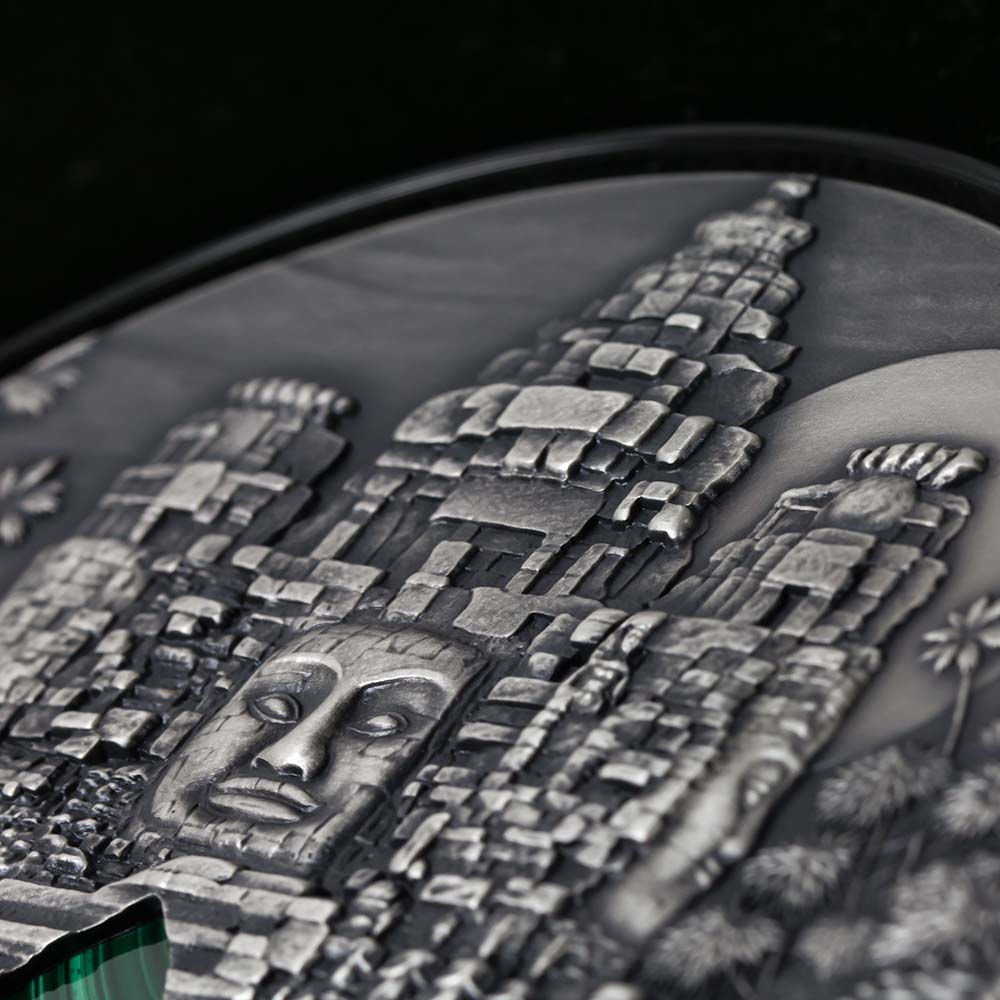
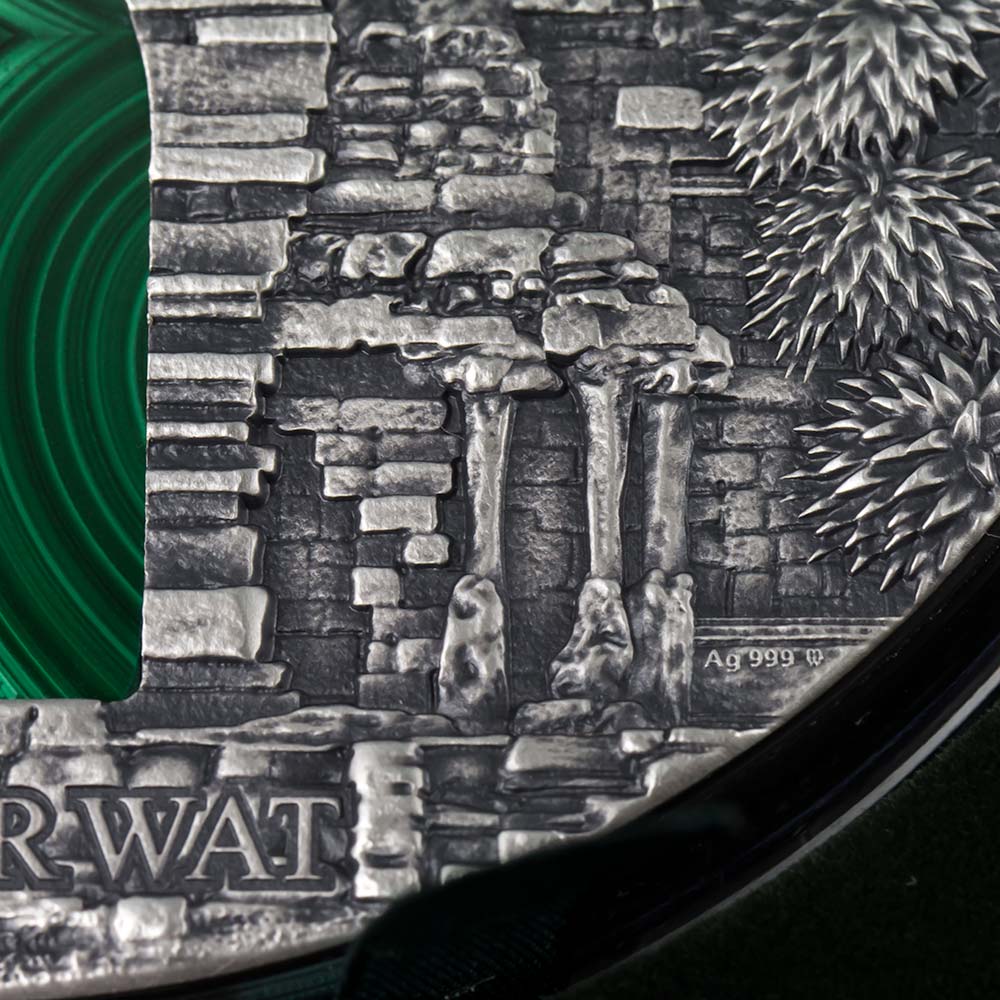




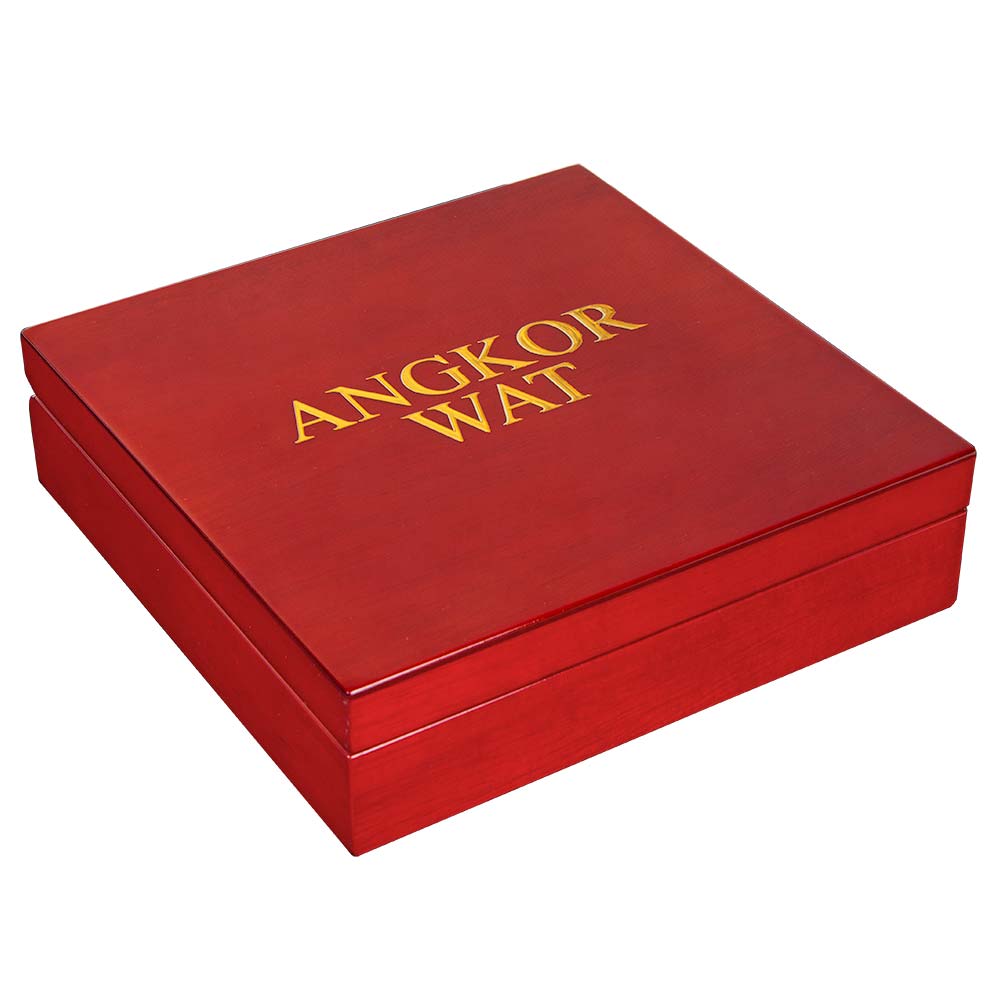

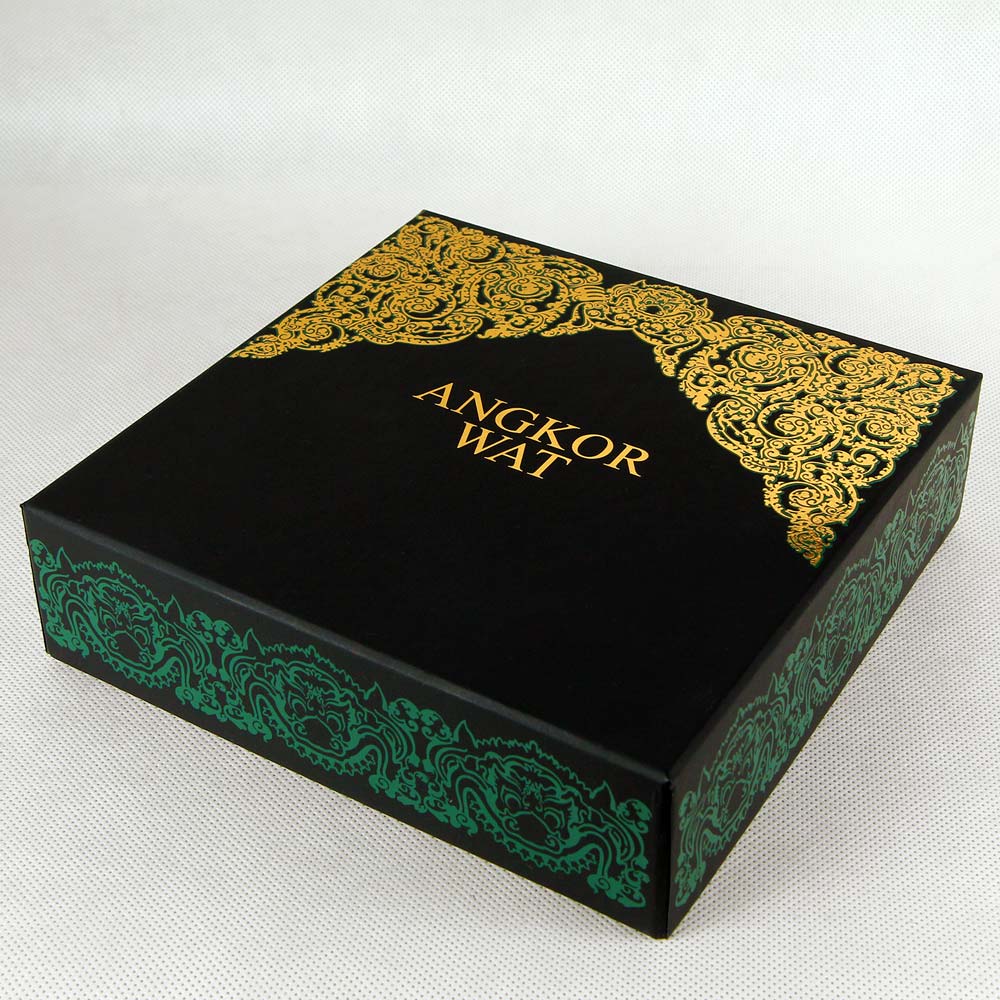
Leave A Comment